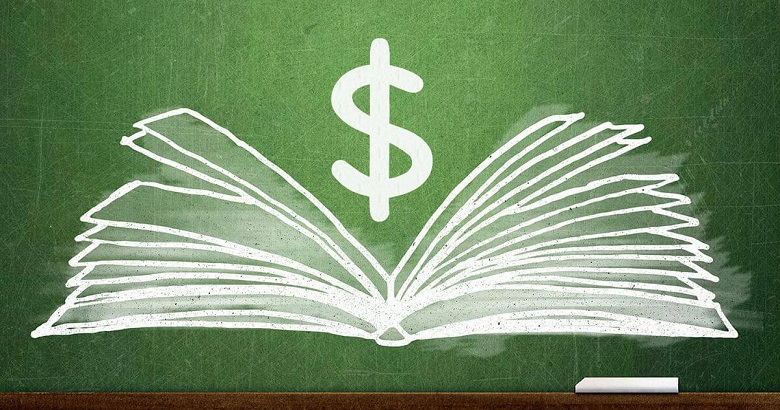Books have been a cornerstone of education, entertainment, and enlightenment for centuries. However, not everyone can enjoy standard print books due to visual impairments or other reading difficulties. For these individuals, large print books are essential. Despite their importance, many readers are often surprised by the higher cost of large print editions. This blog post delves into the reasons behind these elevated prices and explores the factors that contribute to the overall cost of large print books.
Specialized Production Process
The production of large print books involves a specialized process that differentiates it from the production of standard print books. Let’s break down some of these factors:
Typesetting and Layout
Creating a large print book is not simply a matter of increasing the font size. The entire layout of the book must be adjusted. This includes reformatting pages, adjusting line spacing, and sometimes even altering the design elements to ensure readability. These changes require skilled labor and additional time, increasing the overall production cost.
Printing Costs
Large print books are generally printed in smaller quantities compared to standard print books. The economies of scale that benefit mass-produced items are not applicable here. Smaller print runs mean higher per-unit costs, as printers often charge more for shorter runs to cover setup and operational expenses.
Material Costs
The physical materials used in the production of large print books also contribute to their higher cost.
Paper Quality
Large print books often use higher-quality, thicker paper to accommodate the larger font and prevent bleed-through, which can be distracting for readers. Thicker paper is more expensive, adding to the overall cost of the book.
Cover and Binding
To ensure durability, especially for readers who might handle the books more frequently, publishers often use stronger and more durable covers and bindings. These materials are more costly than those used for standard print books.
Distribution Challenges
Distributing large print books poses unique challenges that can add to their cost.
Market Size
The market for large print books is relatively small. This limited market means that publishers cannot rely on high sales volumes to offset production costs. As a result, the price per unit remains high to cover the expenses involved in producing and distributing these books.
Specialized Retailers
Large print books are often sold through specialized retailers or direct-to-consumer channels rather than mainstream bookstores. This distribution method can incur additional costs related to marketing, shipping, and handling, further increasing the overall price of the books.
Licensing and Royalties

The financial agreements between authors, publishers, and other stakeholders also affect the cost of large print books.
Licensing Fees
Publishers must often negotiate separate licensing agreements for large print editions. These agreements can include additional fees, which are then passed on to the consumer.
Author Royalties
Authors typically receive royalties based on the sales of their books. Since large print books are more expensive to produce and sell in smaller quantities, the royalty structure can be more complex. Publishers may need to adjust royalty rates to ensure fair compensation for authors, which can contribute to higher retail prices.
Technological Investments
Adapting to the needs of readers with visual impairments requires significant investment in technology and innovation.
Adaptive Technologies
Publishers may invest in adaptive technologies to create large print books more efficiently. This can include specialized software for typesetting, printing, and quality control. The initial investment in these technologies can be substantial, and the costs are often reflected in the price of the books.
Research and Development
Continuous research and development are necessary to improve the quality and accessibility of large print books. This ongoing investment ensures that publishers can offer the best possible product to readers, but it also adds to the overall cost.
Limited Competition
The market for large print books is not as competitive as the market for standard print books.
Fewer Publishers
There are fewer publishers specializing in large print books, which means less competition to drive down prices. The specialized nature of this market allows existing publishers to maintain higher prices.
Niche Market Dynamics
The niche market dynamics also play a role. Since the demand for large print books is relatively stable but limited, publishers have less incentive to lower prices through competitive pricing strategies. Instead, they focus on maintaining quality and accessibility, which can be costly.
Supporting Accessibility
Purchasing a large print book is not just about buying a product; it’s about supporting accessibility.
Social Responsibility
By producing large print books, publishers and consumers contribute to a more inclusive society. This social responsibility comes with costs that are often reflected in the price of the books. Ensuring that everyone has access to literature, regardless of their visual abilities, is a valuable but expensive endeavor.
Advocacy and Awareness
Part of the cost is also directed towards advocacy and awareness campaigns. These efforts aim to educate the public about the importance of accessible reading materials and to advocate for the needs of visually impaired readers. Such initiatives require funding, which can influence the pricing of large print books.
Conclusion
The higher cost of large print books can be attributed to a combination of specialized production processes, material costs, distribution challenges, licensing and royalty arrangements, technological investments, limited competition, and the overarching goal of supporting accessibility. While these factors contribute to the elevated prices, they also ensure that large print books are of high quality and accessible to those who need them most.
For readers who rely on large print books, the benefits far outweigh the costs. These books provide an essential service, allowing individuals with visual impairments to enjoy literature, stay informed, and participate fully in the world of reading. By understanding the reasons behind the higher prices, consumers can better appreciate the value of large print books and the efforts that go into making them available.
Ultimately, the investment in large print books is an investment in inclusivity and accessibility, fostering a society where everyone has the opportunity to engage with and enjoy the written word.
Frequently Asked Questions
1. What makes large print books more expensive than regular print books?
Large print books require more paper and ink due to the larger font size, increasing production costs. Additionally, they often have smaller print runs, which can drive up the price per unit.
2. Are there additional costs associated with the production of large print books?
Yes, beyond the increased material costs, large print books may involve special typesetting and layout design, which can add to the overall expense.
3. Why do large print books have smaller print runs?
The demand for large print books is generally lower compared to regular print books. Publishers produce fewer copies, leading to higher costs per book due to economies of scale not being fully realized.
4. Do large print books take longer to produce?
The production process for large print books can be more time-consuming due to the need for special formatting and typesetting. This added complexity can contribute to higher prices.
5. Can I find affordable large print books anywhere?
Some libraries and online retailers offer large print books at discounted prices or as part of special programs for visually impaired readers. It’s worth exploring these options for more affordable choices.



